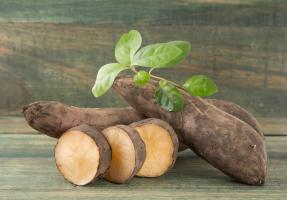Do I Need to Remove Plant from Plastic Pot?
When it comes to indoor gardening, plastic pots are a popular choice due to their affordability, durability, and versatility. However, one question that often arises among plant owners is whether they need to remove their plants from plastic pots. In this article, we will go through the different aspects of this topic to help you decide what is best for your plants.
The Pros and Cons of Keeping Plants in Plastic Pots
Before we delve into whether you need to remove your plants from plastic pots or not, let's first understand the benefits and drawbacks of keeping plants in plastic pots.
Advantages of plastic pots:
Lightweight and easy to move around
Affordable and readily available in different sizes, shapes, and colors
Durable and can last for years
Non-porous, which means they don't absorb water and soil
Easy to clean and sanitize
Disadvantages of plastic pots:
Can trap excess moisture which can lead to overwatering and root rot
Don't provide good aeration to roots
Can get deformed or cracked over time
Can release harmful chemicals if exposed to sunlight or extreme temperatures
When to Remove Plants from Plastic Pots
The short answer is that it depends on your plant's needs and growth stage. Here are some situations where removing your plant from a plastic pot might be necessary:
Repotting: If your plant has outgrown its plastic pot or its soil is depleted of nutrients, it's time to repot it into a larger pot or fresh soil. Repotting your plant in a new pot not only gives it more room to grow but also allows you to inspect its roots for any damage or disease.
Negative signs: If you notice signs of stress, such as wilted leaves, yellowing, or stunted growth, it could be an indication that your plant is not thriving in the plastic pot. This could be because the roots are cramped or not getting enough oxygen, or the soil is too compacted. You may want to take your plant out of the pot and inspect its roots to see if it needs a change of environment.
Root-bound: If you see that the roots of your plant are tightly packed and circling around the bottom of the pot, it's a sign that the pot is too small for the plant. In this case, you should remove the plant from the plastic pot and transplant it into a larger one.
When to Keep Plants in Plastic Pots
On the other hand, there are times where it's best to leave your plants in their plastic pots:
Stability:If your plant is stable in its current plastic pot, there's no need to repot it unless it's showing negative signs. Plants that are root-bound or outgrowing their pots need to be repotted for their health and growth.
Convenience: If you have limited space or prefer the aesthetic of plastic pots, it's okay to keep your plants in them as long as they are thriving. You can still provide them with adequate drainage and nutrients without repotting them.
Tips for Keeping Plants Healthy in Plastic Pots
To help your plants thrive in their plastic pots, here are some tips to keep in mind:
Make sure the pot has drainage holes to prevent water accumulation.
Avoid overwatering and ensure that the soil is well-drained.
Use a high-quality potting mix that provides good aeration and nutrients.
Check the roots periodically for any signs of disease or pests.
Give your plant enough sunlight, warmth, and humidity according to its needs.
Conclusion
In conclusion, whether you need to remove your plant from a plastic pot or not depends on various factors such as the plant's needs, growth stage, and your preference. Plastic pots can be a great option for indoor gardening as long as you provide your plants with the right amount of care and attention. By following the tips and guidelines discussed in this article, you can help your plants thrive in their plastic pots and enjoy a lush, healthy indoor garden year-round.

 how many times do yo...
how many times do yo... how many planted tre...
how many planted tre... how many pine trees ...
how many pine trees ... how many pecan trees...
how many pecan trees... how many plants comp...
how many plants comp... how many plants can ...
how many plants can ... how many plants and ...
how many plants and ... how many pepper plan...
how many pepper plan...































